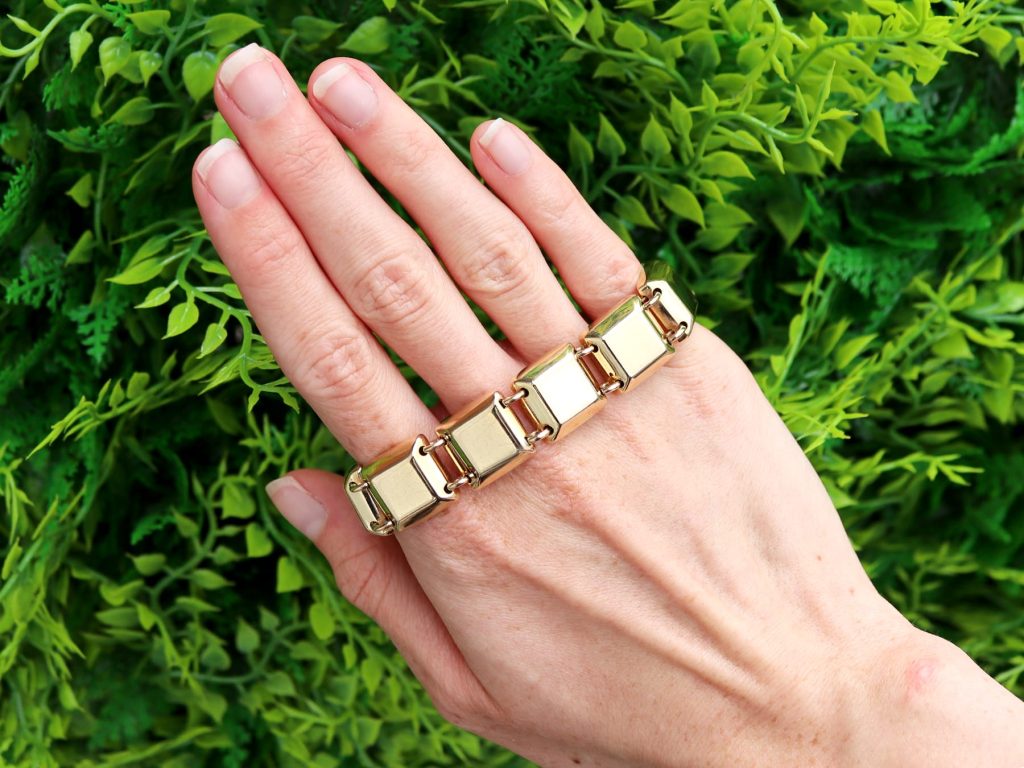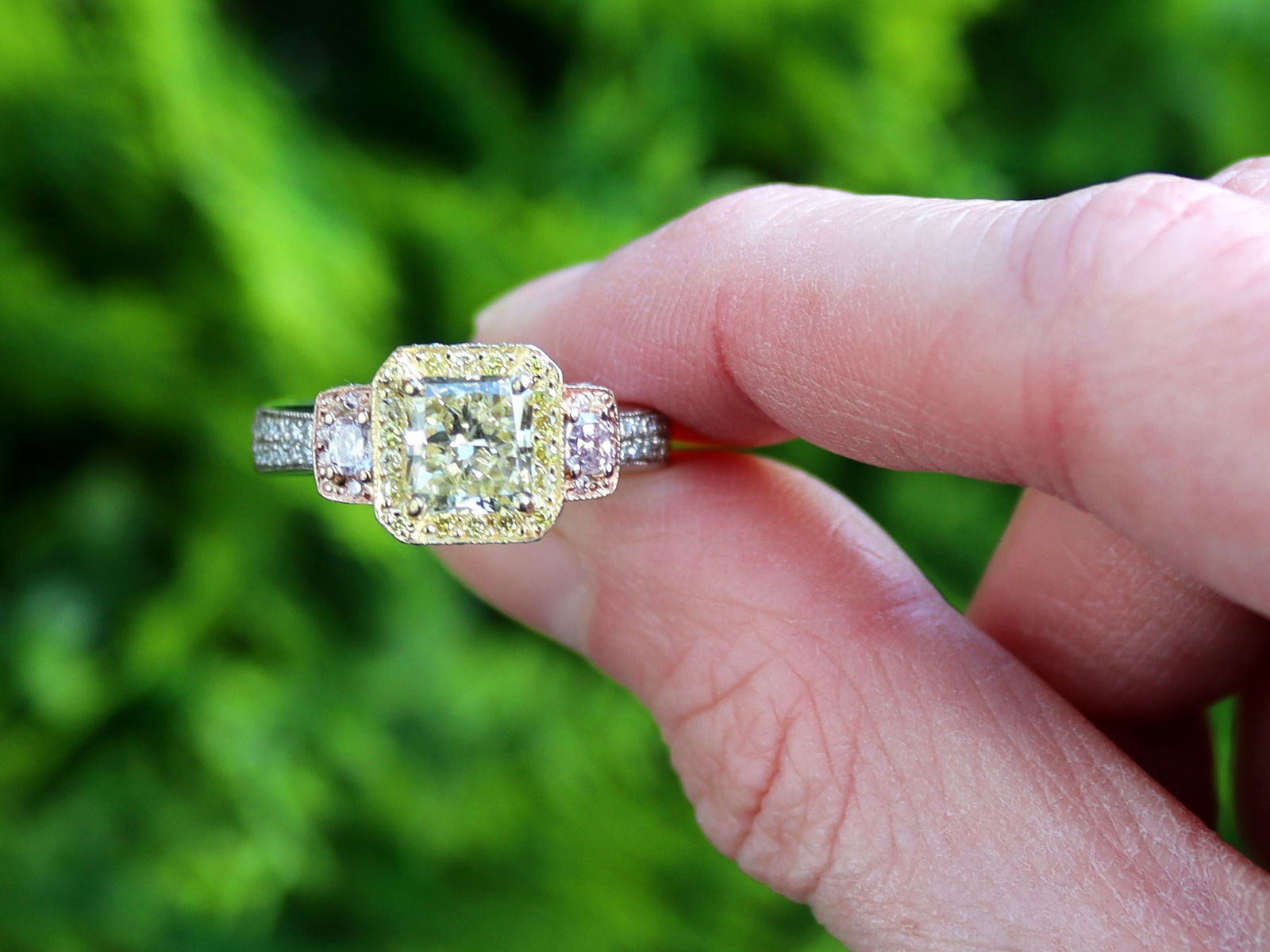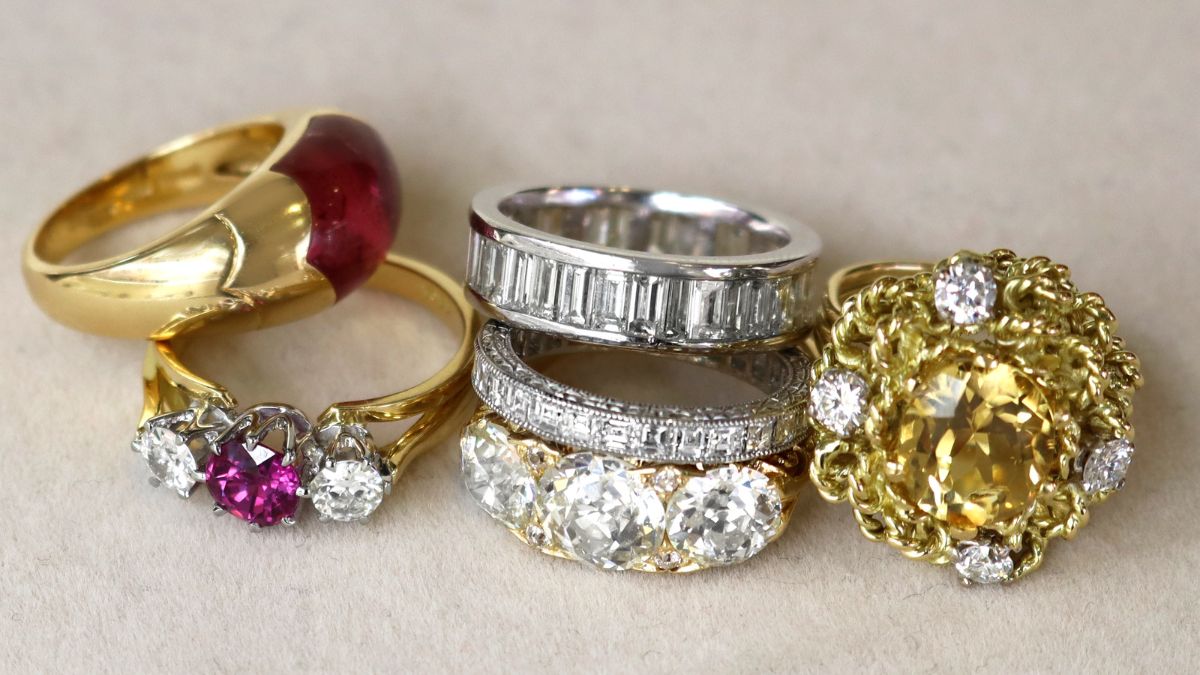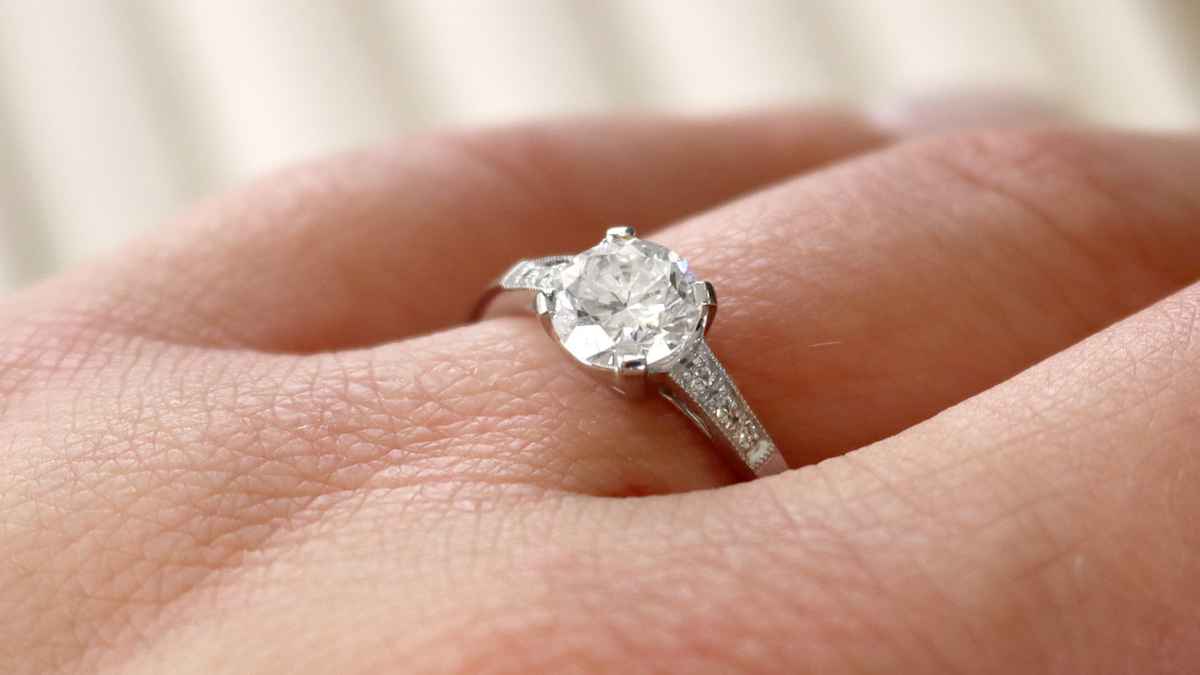Antique bracelets are more than just stunning accessories—they are timeless pieces of art that tell stories of elegance, culture, and unparalleled craftsmanship. From intricate designs to the use of rare materials, these bracelets reflect the artistic brilliance and innovation of their era. Among the most celebrated creators of antique bracelets are designers whose work has stood the test of time, continuing to captivate collectors and jewellery enthusiasts alike. In this blog, we’ll explore the legacy of five famous antique bracelet designers, delving into their unique styles, iconic creations, and lasting influence on the world of fine jewellery. Whether you’re an avid collector or simply appreciate the beauty of vintage treasures, these designers offer a glimpse into the extraordinary artistry of antique jewellery.
Cartier
Cartier is a name synonymous with luxury, innovation, and timeless elegance. Founded in Paris in 1847 by Louis-François Cartier, the brand has become one of the most renowned jewellery houses in the world. Over its storied history, Cartier has crafted some of the most iconic pieces in fine jewellery, catering to royalty, celebrities, and discerning collectors. Dubbed the “Jeweller of Kings and King of Jewellers” by King Edward VII of England, Cartier’s designs transcend trends, reflecting a blend of artistic creativity and masterful craftsmanship.
Signature Styles and Influences
Cartier’s signature styles are a testament to the brand’s ability to adapt to and influence the evolving tastes of the times. The Art Deco period of the 1920s and 1930s significantly shaped Cartier’s design philosophy. Bold geometric patterns, contrasting colours, and streamlined shapes became hallmarks of this era. Cartier’s bracelets, necklaces, and brooches from this time often featured clean lines and innovative uses of materials such as onyx, jade, and coral.
Historical Context of Cartier’s Creations
Cartier’s designs have always been deeply influenced by the cultural and historical context of their time. During the Belle Époque (late 19th to early 20th century), Cartier embraced ornate and delicate designs featuring garlands, bows, and floral motifs. The Art Deco movement brought a shift toward modernity and boldness, inspiring the use of geometric shapes and vibrant colours.
Craftsmanship and Materials
Cartier’s commitment to quality and craftsmanship is evident in every piece. The brand’s master jewellers employ meticulous techniques to ensure perfection, from stone selection to setting. Cartier uses only the finest gemstones, chosen for their colour, clarity, and brilliance. Diamonds, sapphires, emeralds, and rubies often feature prominently in their creations. The use of platinum became a signature of Cartier, particularly during the Edwardian and Art Deco periods. Its strength and lightness allowed for intricate, delicate designs that were both durable and visually stunning.
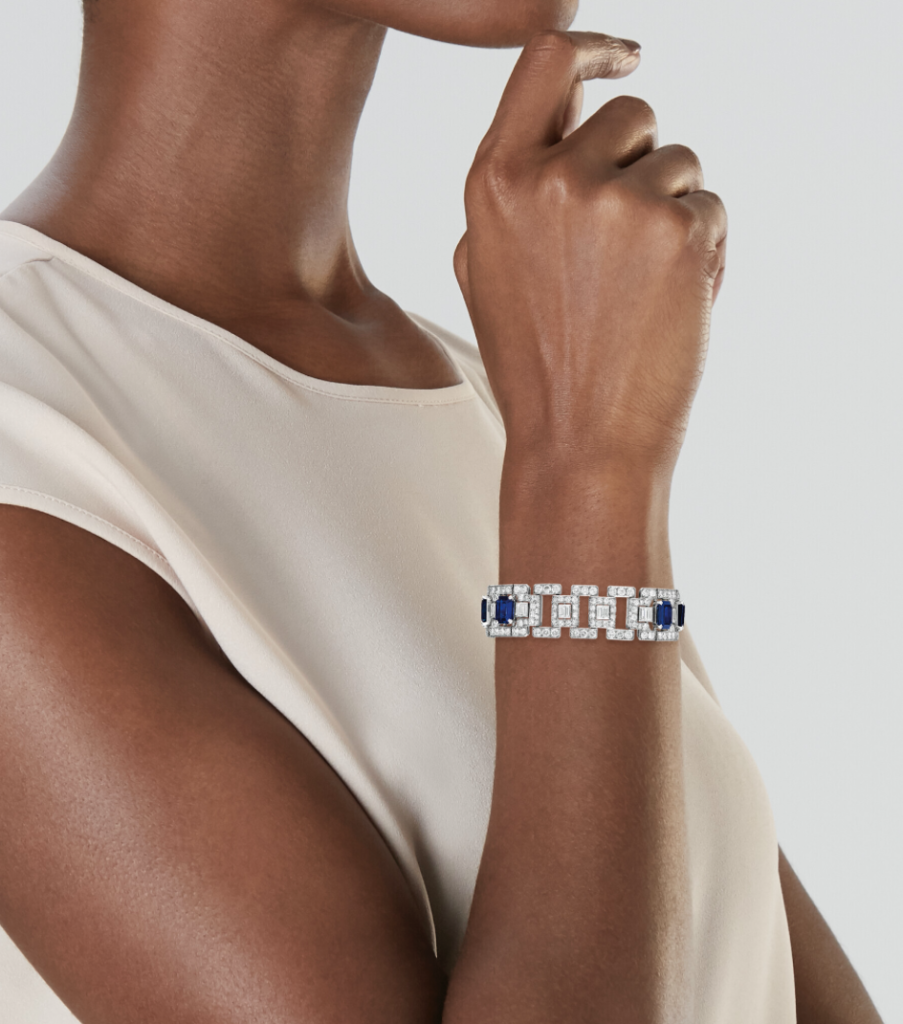
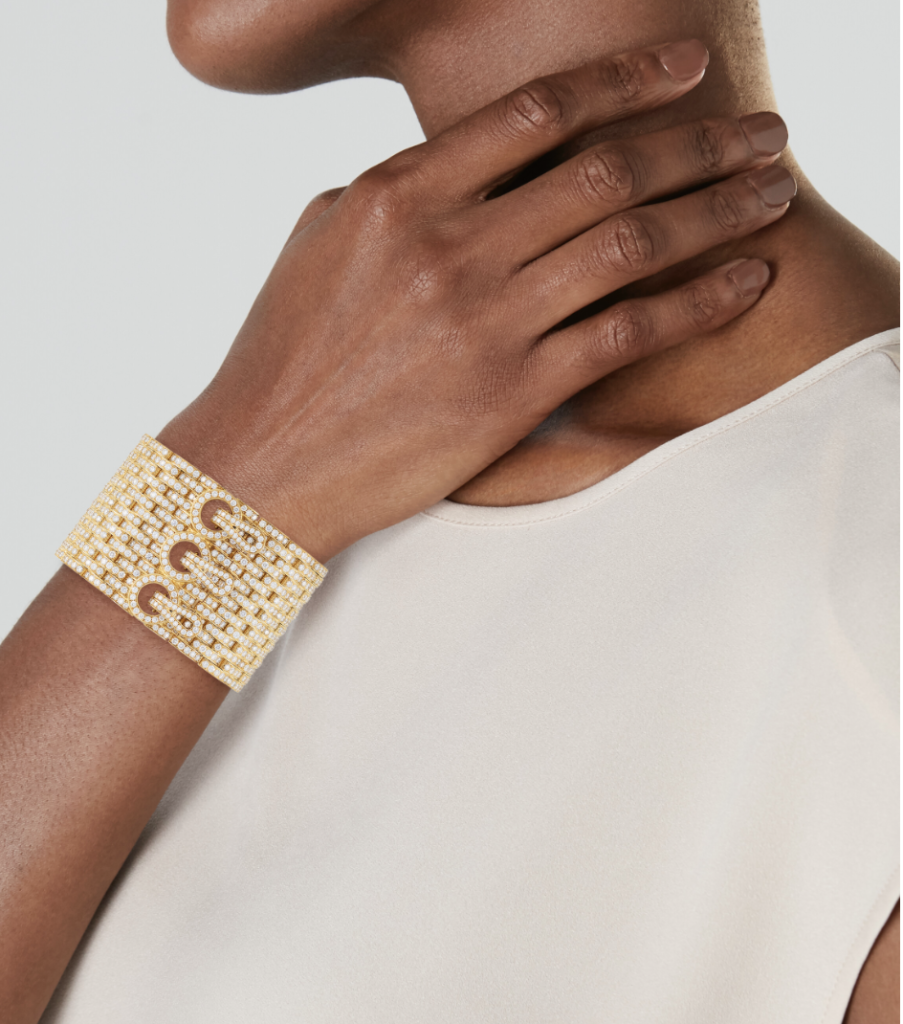
Legacy and Influence
Cartier’s legacy extends far beyond its iconic creations. The brand’s ability to blend tradition with innovation has ensured its place as a leader in fine jewellery for over 175 years. Today, Cartier continues to inspire with its dedication to excellence, creativity, and timeless design.
Tiffany & Co.
Tiffany & Co., an enduring symbol of elegance and sophistication, has been synonymous with luxury since its founding in 1837. Established in New York City by Charles Lewis Tiffany and John B. Young, the brand began as a stationery and fancy goods emporium before evolving into one of the world’s most celebrated jewellers. Known for its signature “Tiffany Blue” boxes and timeless designs, Tiffany & Co. has shaped the landscape of fine jewellery and continues to define American luxury with its unparalleled craftsmanship, especially in the realm of bracelets. From delicate bangles to bold statement cuffs, Tiffany bracelets have become iconic expressions of style and elegance.
Signature Styles and Influences in Bracelets
Tiffany & Co.’s bracelets are celebrated for their simplicity, elegance, and timeless appeal. The Tiffany T collection, introduced in 2014, features modern, minimalist designs centred around the bold “T” motif. The bracelets, available in various metals like gold, platinum, and sterling silver, often incorporate diamonds for added brilliance. These designs symbolize strength, connection, and timeless elegance. Tiffany & Co. has also redefined chain bracelets, offering a range of styles from classic link designs to bold statement pieces. Their craftsmanship ensures each link is polished to perfection, creating bracelets that are both durable and elegant.
Historical Context of Tiffany & Co.’s Bracelet Creations
Tiffany & Co.’s bracelet designs have evolved with cultural and artistic movements over the years. During the Victorian era, the brand’s bracelets often featured romantic motifs like bows and floral patterns. The Art Deco period brought bold geometric designs to Tiffany bracelets, reflecting the glamour and modernity of the 1920s and 1930s.
Craftsmanship and Materials
Tiffany & Co. is celebrated for its dedication to exceptional craftsmanship and the use of the finest materials. Tiffany bracelets are crafted from premium materials, including sterling silver, 18k gold, and platinum, ensuring durability and elegance. Every Tiffany bracelet is meticulously handcrafted by skilled artisans, with attention paid to every link, clasp, and setting. Whether it’s a delicate charm bracelet or a bold cuff, Tiffany’s designs are created to transcend trends and remain stylish for generations.
Legacy and Influence
Tiffany & Co. has left an indelible mark on the world of fine jewellery, particularly in the realm of bracelets. From the iconic Tiffany T designs to the sentimental Return to Tiffany® collection, their bracelets have become symbols of luxury, style, and personal expression. The brand’s innovations, such as reimagining the chain bracelet and introducing modern motifs, have revolutionized the jewellery industry.
Georg Jensen
Georg Jensen, a name synonymous with Scandinavian design, is celebrated for its timeless jewellery, silverware, and home goods. Founded in Copenhagen in 1904 by Danish silversmith Georg Jensen, the brand has become a global symbol of modern elegance and craftsmanship. Jensen’s design philosophy combined functional beauty with artistic expression, creating pieces that transcend trends.
Signature Styles and Influences in Bracelets
Georg Jensen’s bracelets are renowned for their clean lines, organic forms, and innovative use of materials, reflecting the principles of Scandinavian design. Early Georg Jensen bracelets were inspired by the Art Nouveau movement, featuring flowing, nature-inspired motifs such as leaves, flowers, and vines. These designs celebrated the harmony between natural forms and craftsmanship. Bold, wide cuffs and slender, polished bangles are staples of Georg Jensen’s bracelet collections. These pieces highlight the brand’s mastery of metalwork and its commitment to creating wearable art.
Historical Context of Georg Jensen’s Creations
Georg Jensen’s designs were heavily influenced by the cultural and artistic movements of his time. In the early 20th century, the Art Nouveau movement emphasized nature and organic forms, which resonated with Jensen’s own artistic sensibilities. This influence is evident in his early bracelets, which celebrated natural beauty and intricate detailing.
As the 20th century progressed, the rise of modernism brought a shift towards minimalism and abstraction. Jensen’s collaborations with pioneering designers allowed the brand to remain at the forefront of innovation, introducing bracelets that combined functionality with striking aesthetics. Scandinavian design’s emphasis on simplicity and quality further shaped the brand’s identity, resulting in timeless creations that appeal to a global audience.
Craftsmanship and Materials
Georg Jensen’s commitment to craftsmanship and the use of premium materials is central to its enduring reputation. Georg Jensen is renowned for its mastery of sterling silver, a material that has defined many of its iconic bracelets. The brand’s silversmiths use traditional techniques to create pieces with impeccable finishes and detailing. In addition to silver, Georg Jensen incorporates other high-quality materials such as gold, stainless steel, and gemstones. The combination of these elements adds depth and versatility to the bracelet collections.
Legacy and Influence
Georg Jensen’s bracelets embody the brand’s dedication to timeless design and exceptional craftsmanship. Whether it’s a delicate silver bangle, a bold sculptural cuff, or a customizable Fusion bracelet, each piece reflects the brand’s ability to blend artistry with functionality. Jensen’s creations have become icons of Scandinavian design, influencing modern jewellery trends and setting standards for elegance and quality.
Today, Georg Jensen continues to honour its founder’s vision, crafting bracelets that are not only beautiful but also meaningful. These pieces are more than accessories; they are expressions of individuality and symbols of enduring style, making them the perfect choice for anyone seeking refined and timeless jewellery.
Boucheron
Boucheron, one of the oldest and most prestigious French jewellery houses, has been a symbol of elegance, innovation, and artistry since its founding in 1858 by Frédéric Boucheron. Based in the heart of Paris at Place Vendôme,
Boucheron has become synonymous with exceptional craftsmanship and bold creativity. The brand has created iconic jewellery for royalty, celebrities, and connoisseurs worldwide, with its bracelets standing out as masterpieces of design and sophistication. Blending tradition with modernity, Boucheron continues to captivate with its exquisite bracelet collections.
Signature Styles and Influences in Bracelets
Boucheron’s bracelets are celebrated for their innovative designs, luxurious materials, and intricate detailing. Boucheron’s love for nature is evident in many of its bracelets, featuring motifs like leaves, flowers, and animals. Iconic designs such as the “Lierre de Paris” collection (inspired by ivy) and serpent-themed bracelets showcase the brand’s ability to translate nature into wearable art. The 1920s and 1930s were pivotal years for Boucheron, as the Art Deco movement influenced the brand’s geometric and symmetrical designs.
Bracelets from this era often feature bold patterns, contrasting materials, and a harmonious balance of colour and form. Boucheron’s high jewellery bracelets are unparalleled in their opulence, featuring exceptional gemstones, intricate settings, and bold, imaginative designs. These one-of-a-kind pieces are true statements of luxury and artistry.
Client error: `GET https://graph.facebook.com/v22.0/instagram_oembed?url=https%3A%2F%2Fwww.instagram.com%2Fp%2FC99YCKYoS9V%2F&access_token=EAAG5hzKyxakBACamezker2hNgiI15eZAO1EKnYqxBkdOEX9hHtjmhu9xeNATsnCTOEDO39nfqKBSPt8ZBuQh2Pak8juZAr8vkZAbKdzvvpFx5IB8TIK9JEmXef6XaB9jKis2RYP9jZBeMljPTtJlAiu6rmbDSC4NH4d2bToKh3sT9XZCcSl0YYfCSl96G6tCzJhQ0MeWbrIXXTPNYQqiuNxB2TZB7fwBJa2ZCZBjvJwYJEKQI1AZAmZAOnH3OyBQycb1Y4ZD` resulted in a `400 Bad Request` response: {"error":{"message":"The requested resource does not exist","type":"OAuthException","code":24,"error_subcode":2207045,"i (truncated…)
Historical Context of Boucheron’s Creations
Boucheron’s designs have always been influenced by the cultural and artistic movements of their time. During the Belle Époque (late 19th to early 20th century), the brand’s bracelets featured delicate floral motifs, garlands, and lace-like patterns, reflecting the romanticism of the era. The Art Deco period brought a shift towards geometric designs, clean lines, and vibrant colours , which became hallmarks of Boucheron’s creations in the 1920s and 1930s.
The brand’s global influences are also evident in its designs. Boucheron’s fascination with Eastern cultures inspired exotic motifs and the use of vibrant gemstones, while its collaborations with royal families and aristocrats resulted in custom designs that blended tradition with innovation.
Craftsmanship and Materials
Boucheron’s bracelets are a testament to the brand’s commitment to exceptional craftsmanship and the use of the finest materials. Boucheron’s artisans are known for their intricate metalwork, whether crafting delicate filigree patterns or bold, sculptural designs. The use of gold and platinum ensures both durability and elegance. Boucheron has always embraced innovation, from developing new ways to set stones to experimenting with textures and finishes. The Quatre collection, for example, features a blend of different gold finishes and techniques that highlight the brand’s artistry. Every bracelet is meticulously handcrafted, with each detail—from the clasp to the gemstone settings—reflecting Boucheron’s dedication to perfection.
Legacy and Influence
Boucheron’s bracelets embody the brand’s legacy of innovation, artistry, and elegance. From delicate nature-inspired designs to bold, modern creations, each piece reflects the house’s ability to adapt to changing times while remaining true to its heritage. Boucheron’s bracelets are not only stunning works of art but also symbols of individuality and luxury, making them treasured possessions for collectors and jewellery enthusiasts alike.
Schiaparelli
Schiaparelli, founded by Elsa Schiaparelli in Paris in 1927, is a fashion and jewellery house celebrated for its avant-garde designs and innovative artistry. Known as one of the most daring and imaginative designers of the 20th century, Schiaparelli revolutionized the world of fashion and accessories by blending surrealism with luxury. Among her many contributions, Schiaparelli’s bracelets stand out as bold statements of creativity and individuality.
Signature Styles and Influences in Bracelets
Schiaparelli’s bracelets reflect her distinctive vision, characterised by artistic boldness and a willingness to push boundaries. Schiaparelli often drew on surrealist art to create bracelets that were whimsical and unconventional. Designs featuring motifs like eyes, lips, hands, and fantastical creatures challenged traditional notions of jewellery and transformed bracelets into wearable works of art. Elsa Schiaparelli’s love for vibrant and unconventional colour palettes, such as her signature “shocking pink,” extended to her bracelet designs. Colourful gemstones, enamels, and rhinestones brought a playful yet luxurious touch to her creations.
Historical Context of Schiaparelli’s Creations
Schiaparelli’s designs were deeply influenced by the cultural and artistic movements of her time. In the 1930s and 1940s, the surrealist movement had a profound impact on her work, leading to collaborations with avant-garde artists and the creation of jewellery that blurred the line between art and fashion. Her bold designs also mirrored the social changes of the era, empowering women to express themselves through daring and unconventional accessories.
Craftsmanship and Materials
Schiaparelli’s bracelets exemplify exceptional craftsmanship and an innovative use of materials. Schiaparelli’s bracelets often featured intricate detailing, from sculpted motifs to hand-painted enamels, reflecting her commitment to artistry. While many of her bracelets used costume jewellery techniques, Schiaparelli ensured that every piece radiated luxury, often incorporating high-quality rhinestones, gold plating, and finely crafted settings.
Legacy and Influence
Schiaparelli’s bracelets remain iconic symbols of avant-garde luxury and artistic expression. Her ability to merge surrealism with high fashion revolutionized the jewellery industry, inspiring generations of designers to embrace creativity and push boundaries. Today, Schiaparelli’s name is synonymous with bold, statement-making accessories that empower wearers to express their individuality.
Under the creative direction of Daniel Roseberry, the Schiaparelli brand continues to honour its founder’s legacy, crafting bracelets that blend surrealist artistry with modern elegance. From sculptural cuffs to vibrant bangles, Schiaparelli bracelets remain timeless expressions of innovation and style, making them coveted pieces for collectors and fashion enthusiasts alike.
Exploring the works of renowned antique bracelet designers offers a captivating glimpse into the artistry and history of fine jewellery. For those inspired to own a piece of this legacy, AC Silver presents an exquisite collection of antique and vintage bracelets. Each bracelet is a testament to exceptional craftsmanship and timeless elegance, allowing collectors and enthusiasts to find a piece that resonates with their personal style and appreciation for history.

